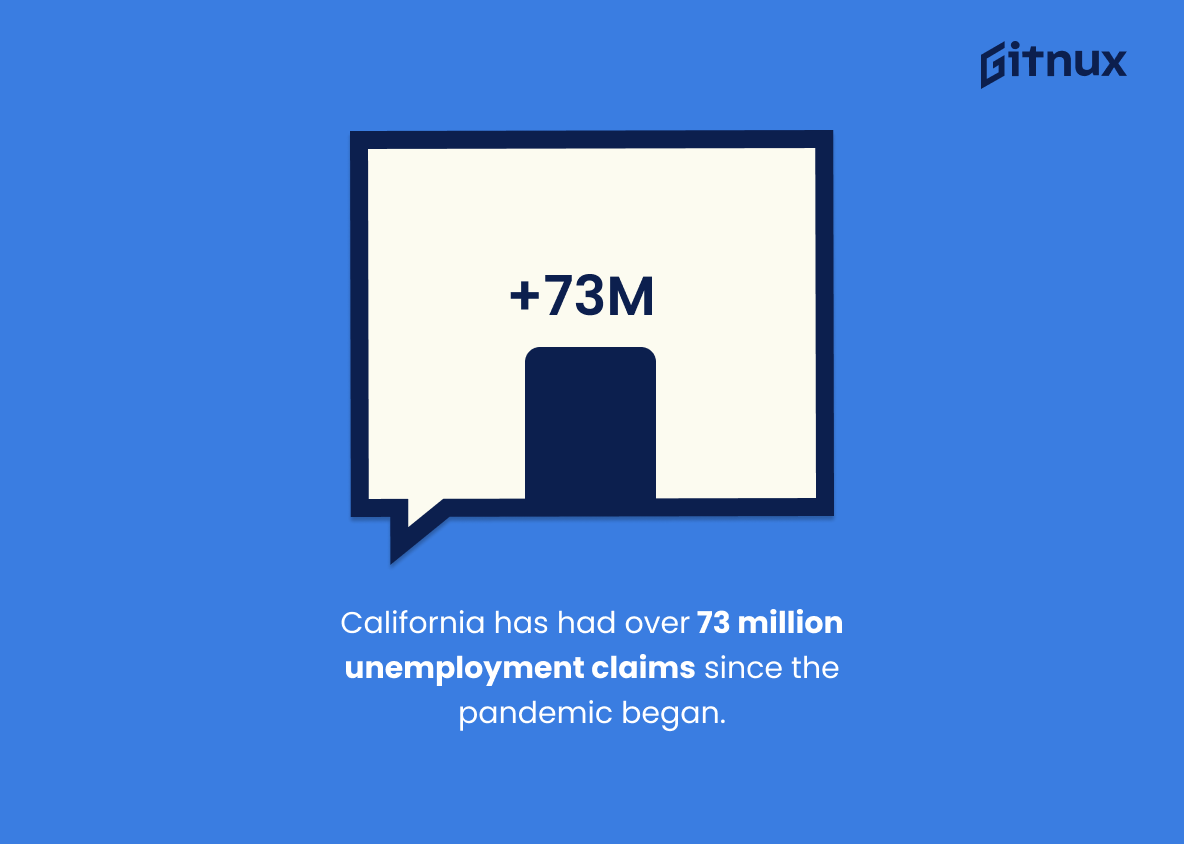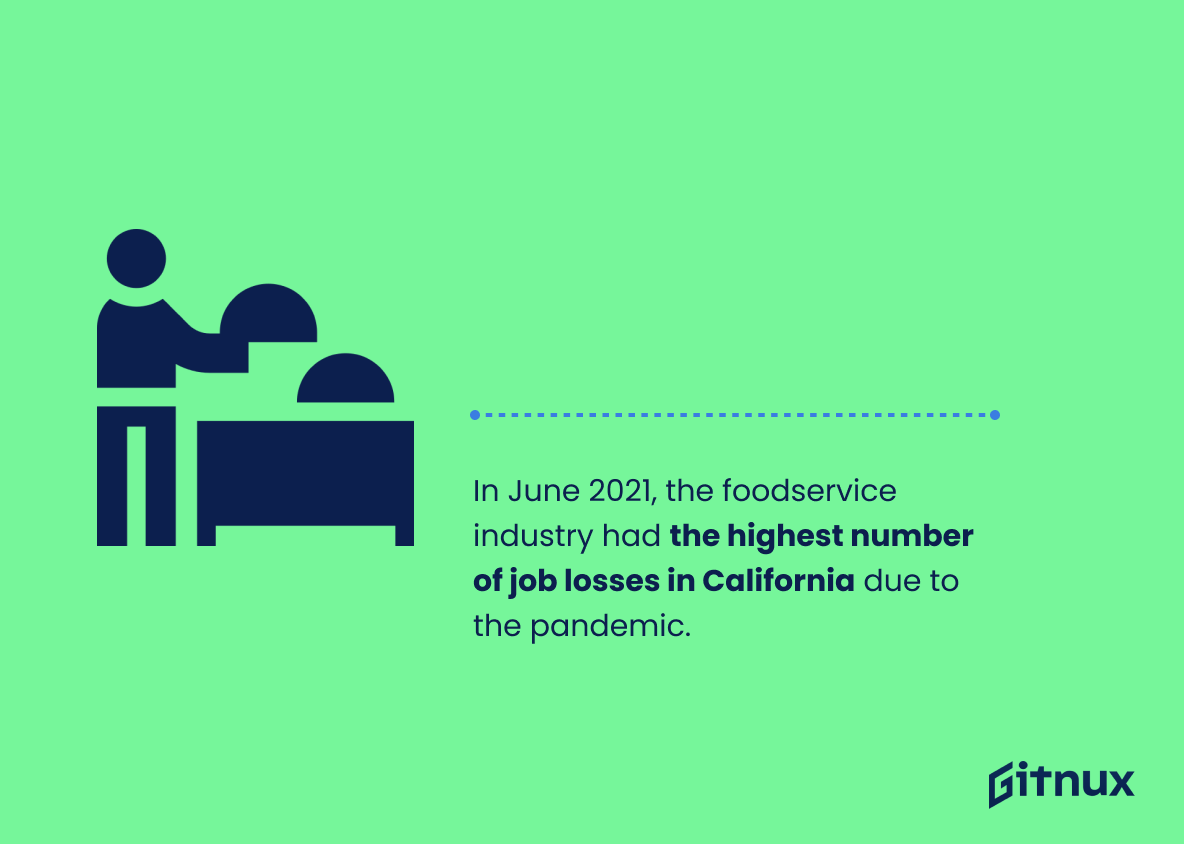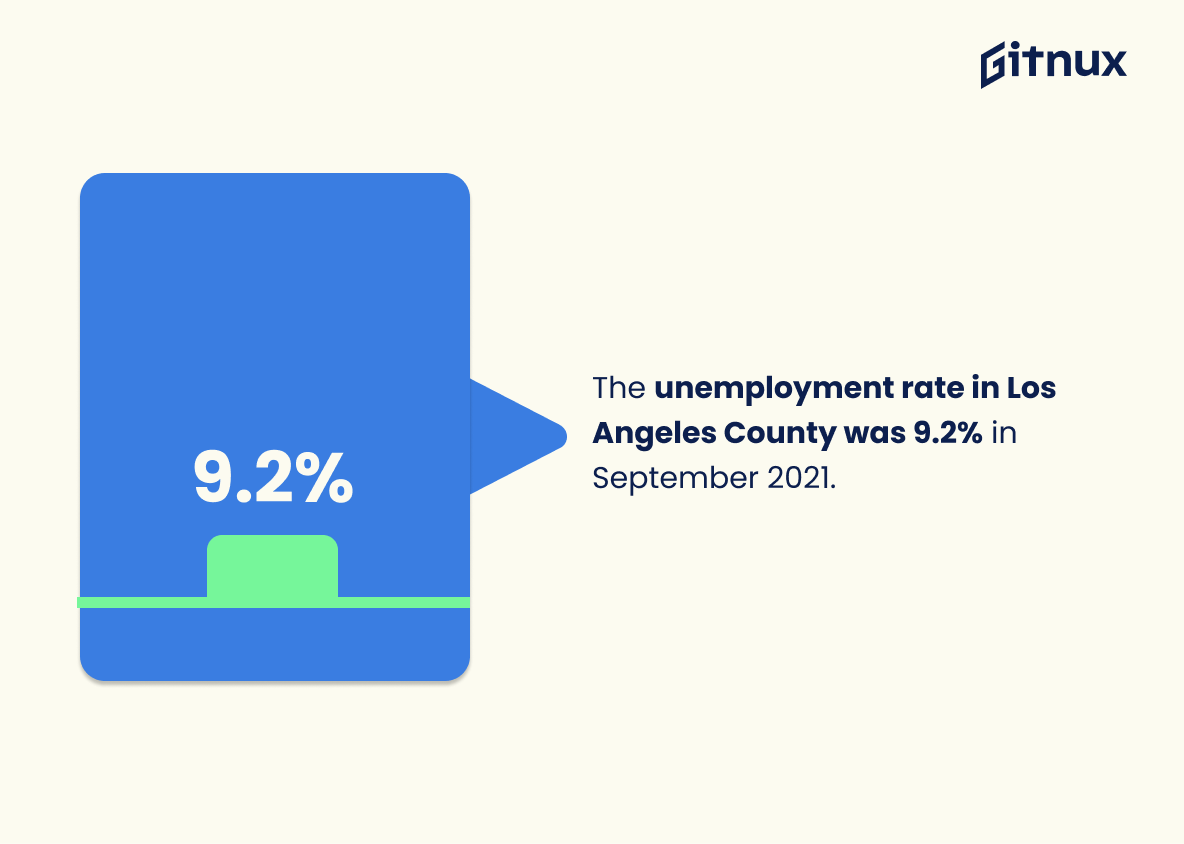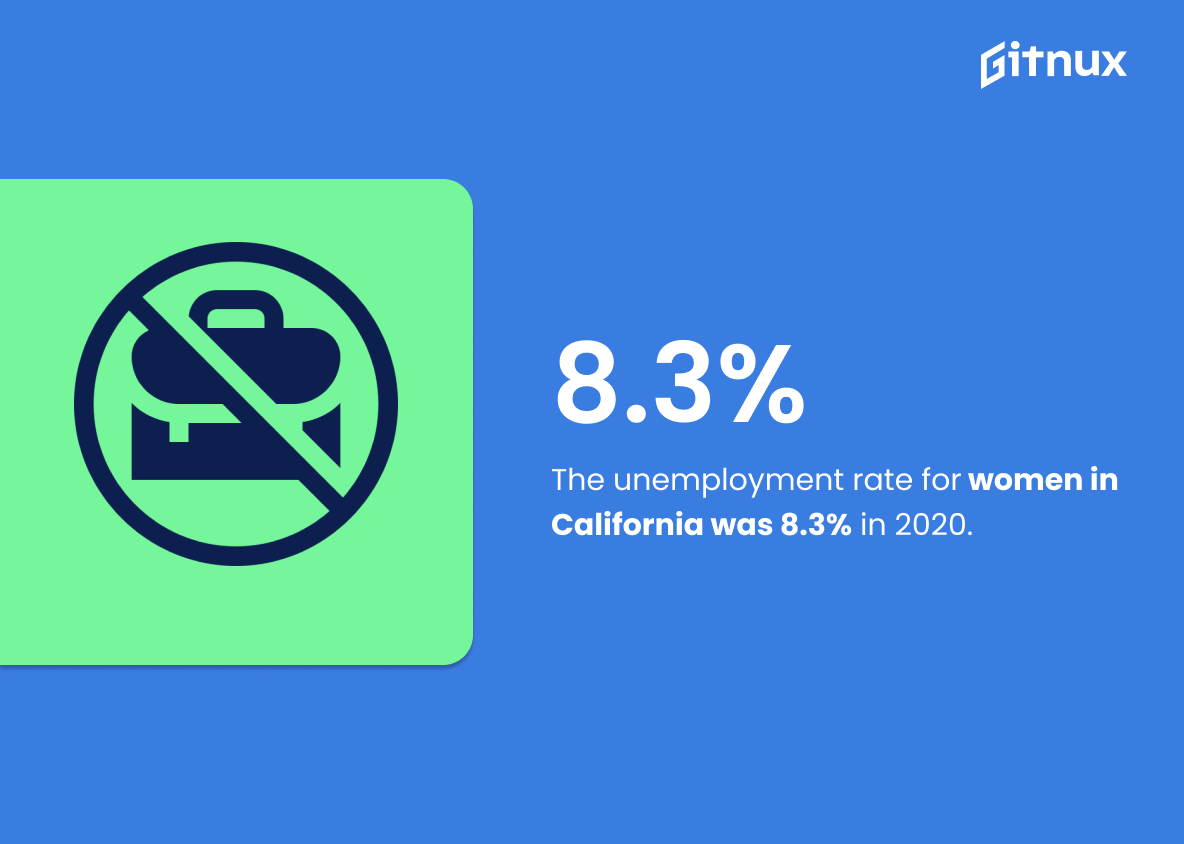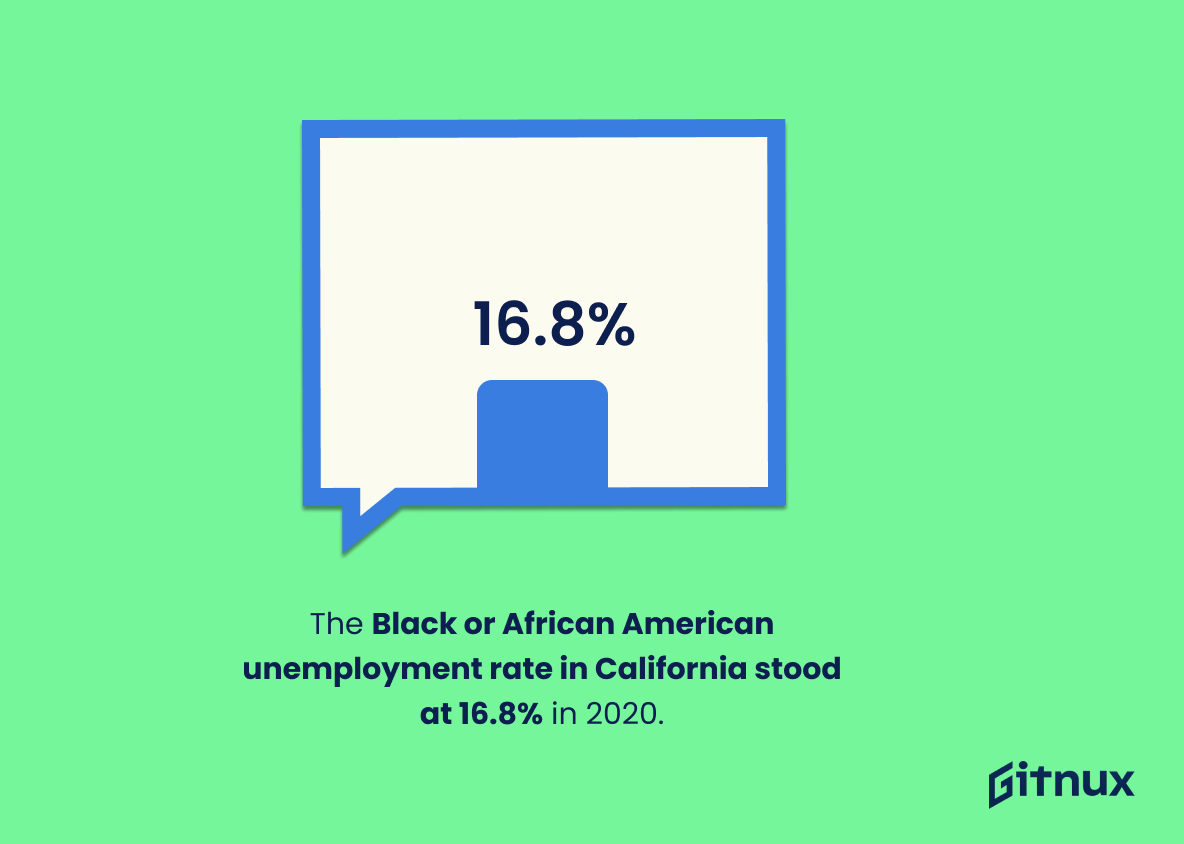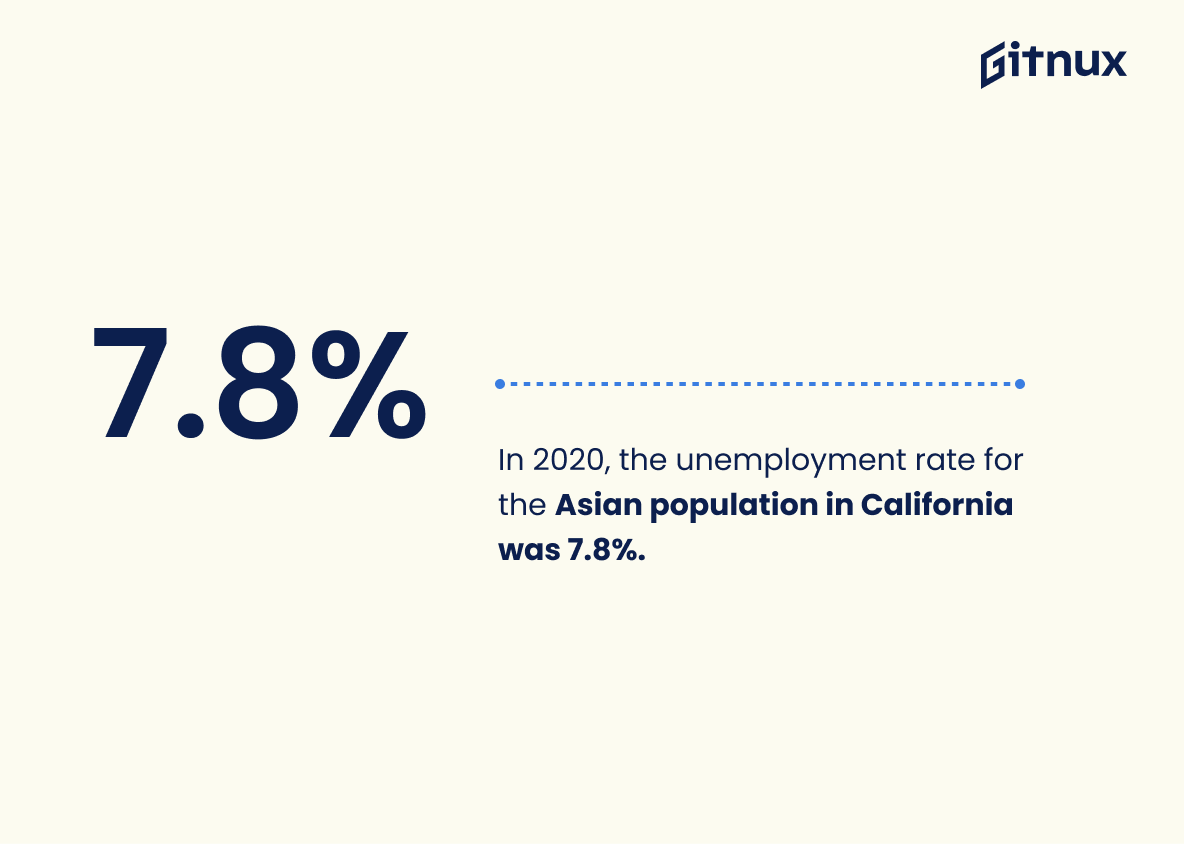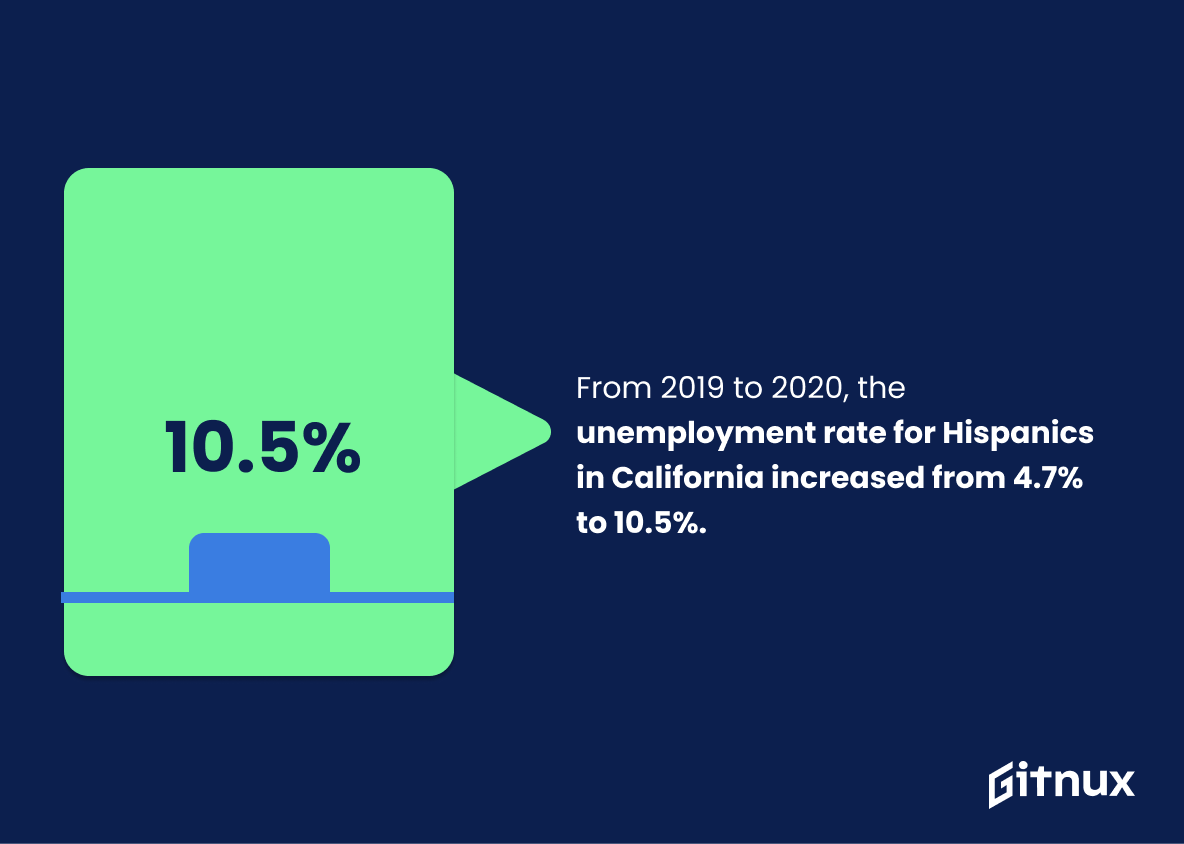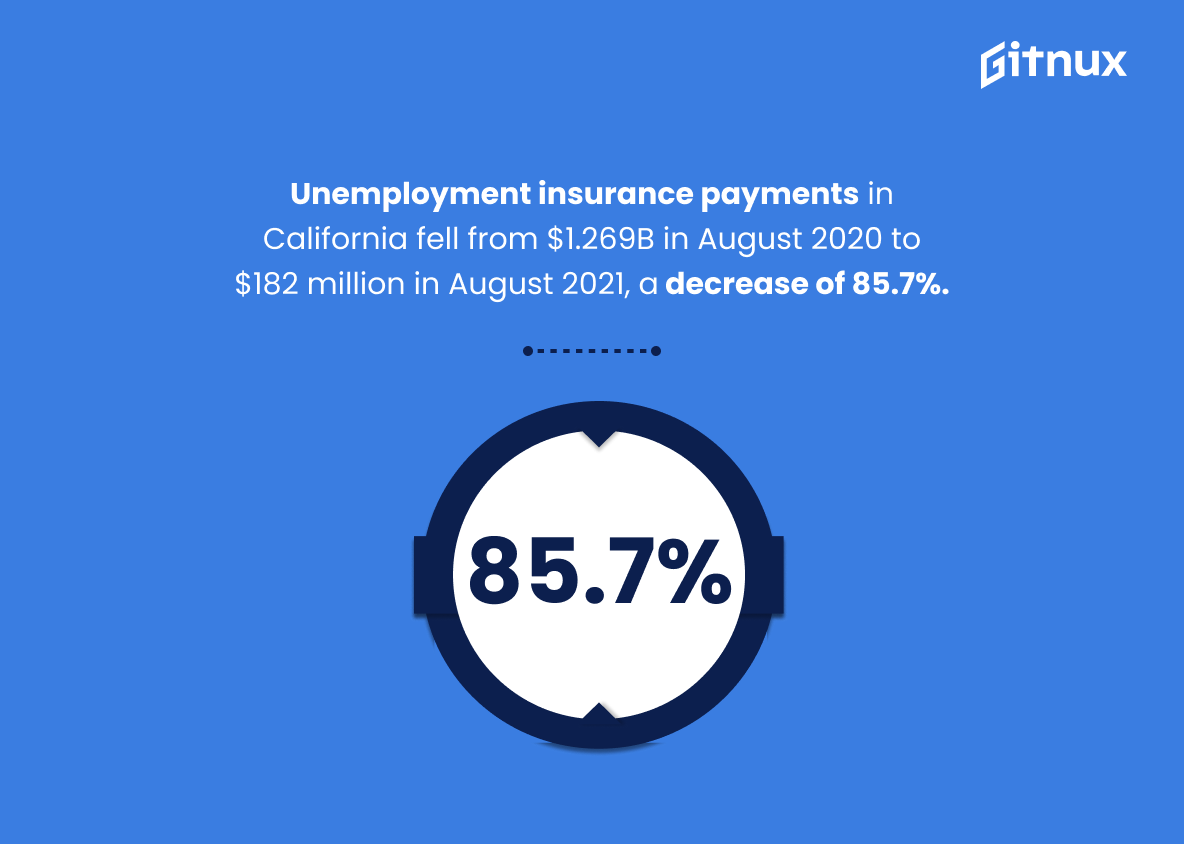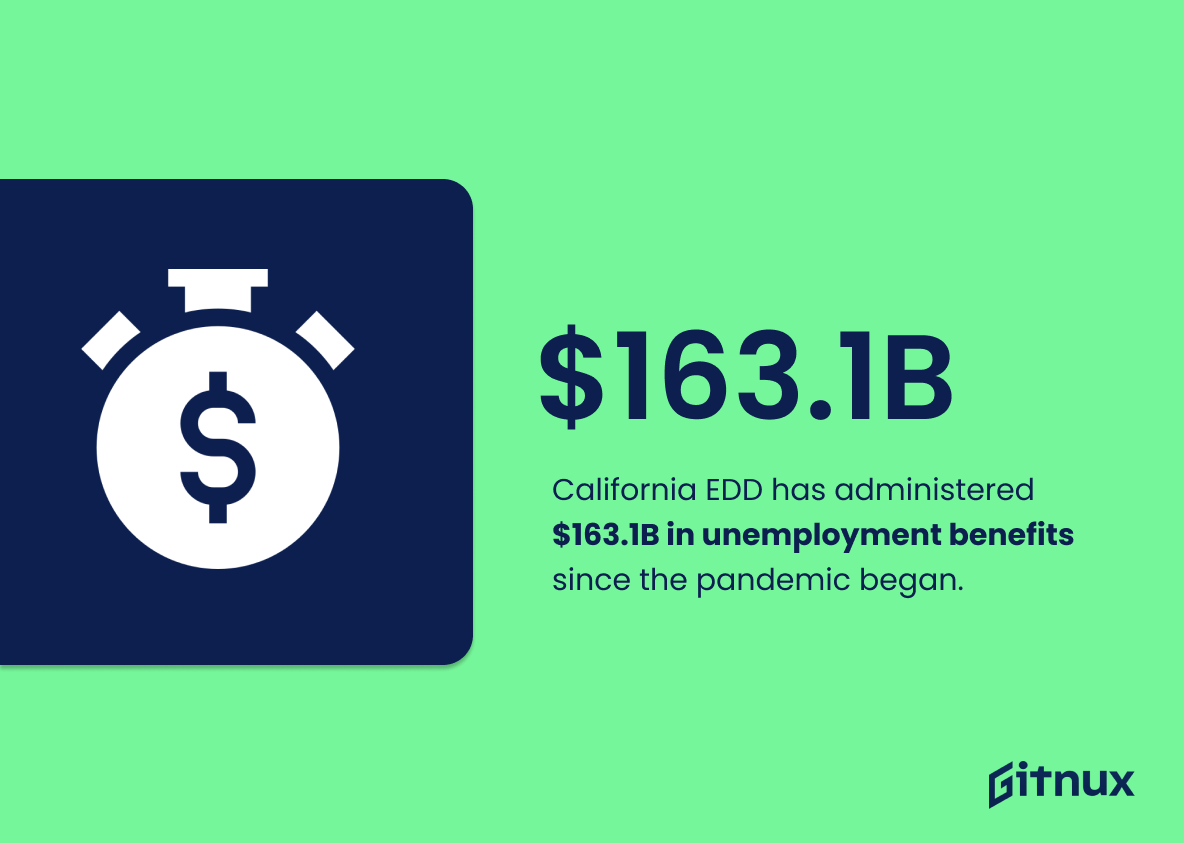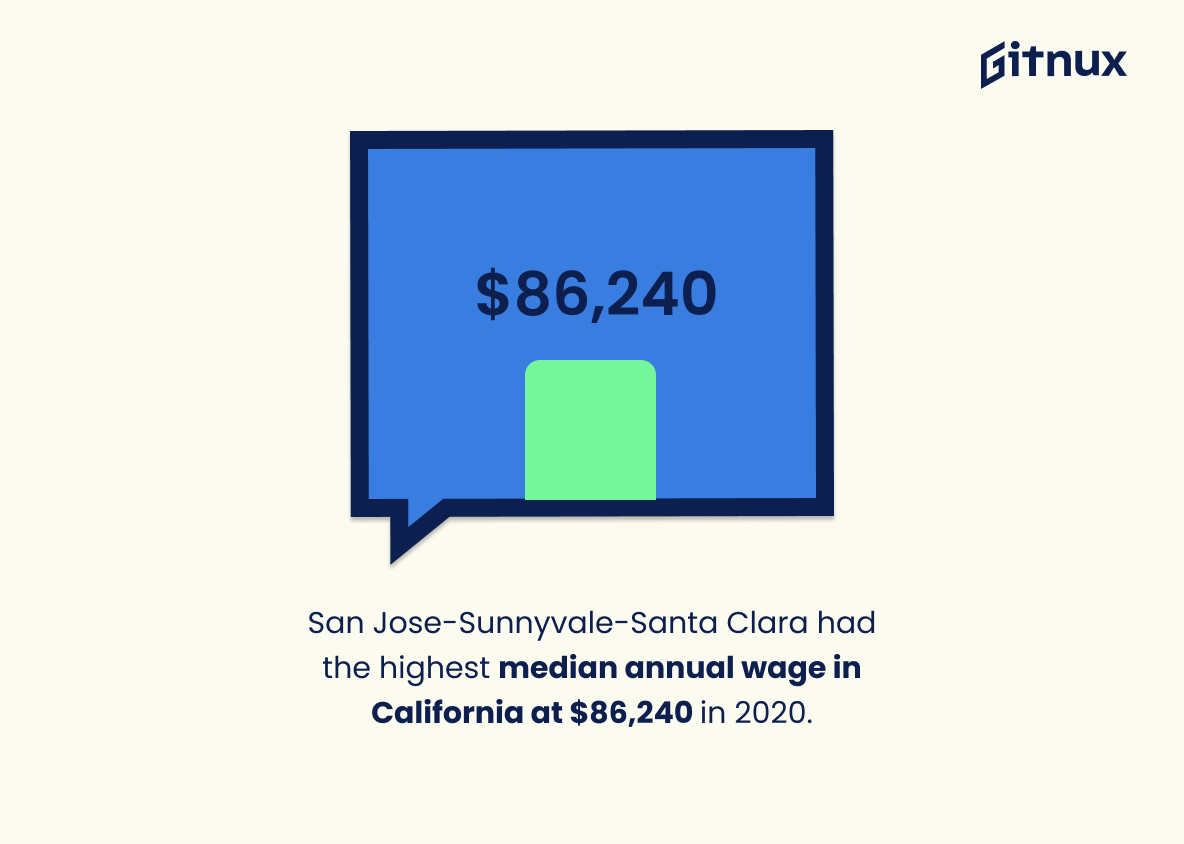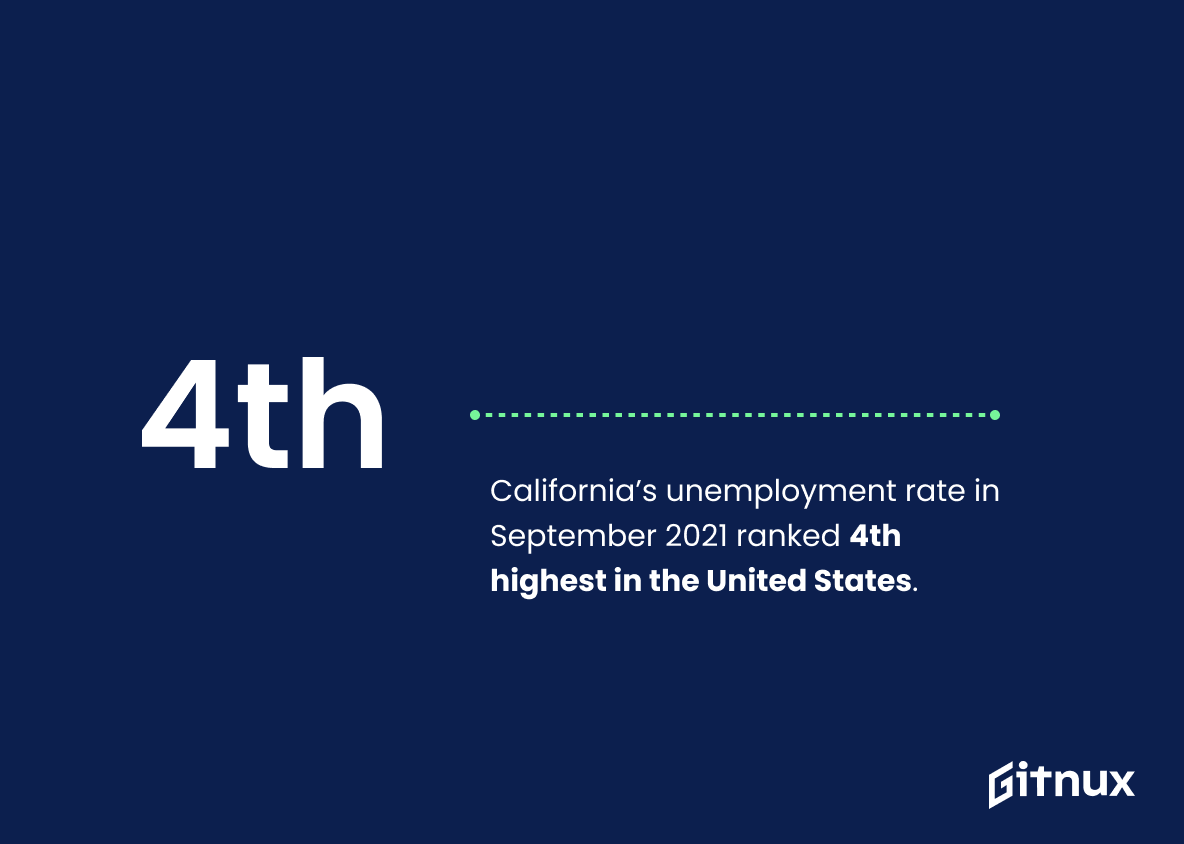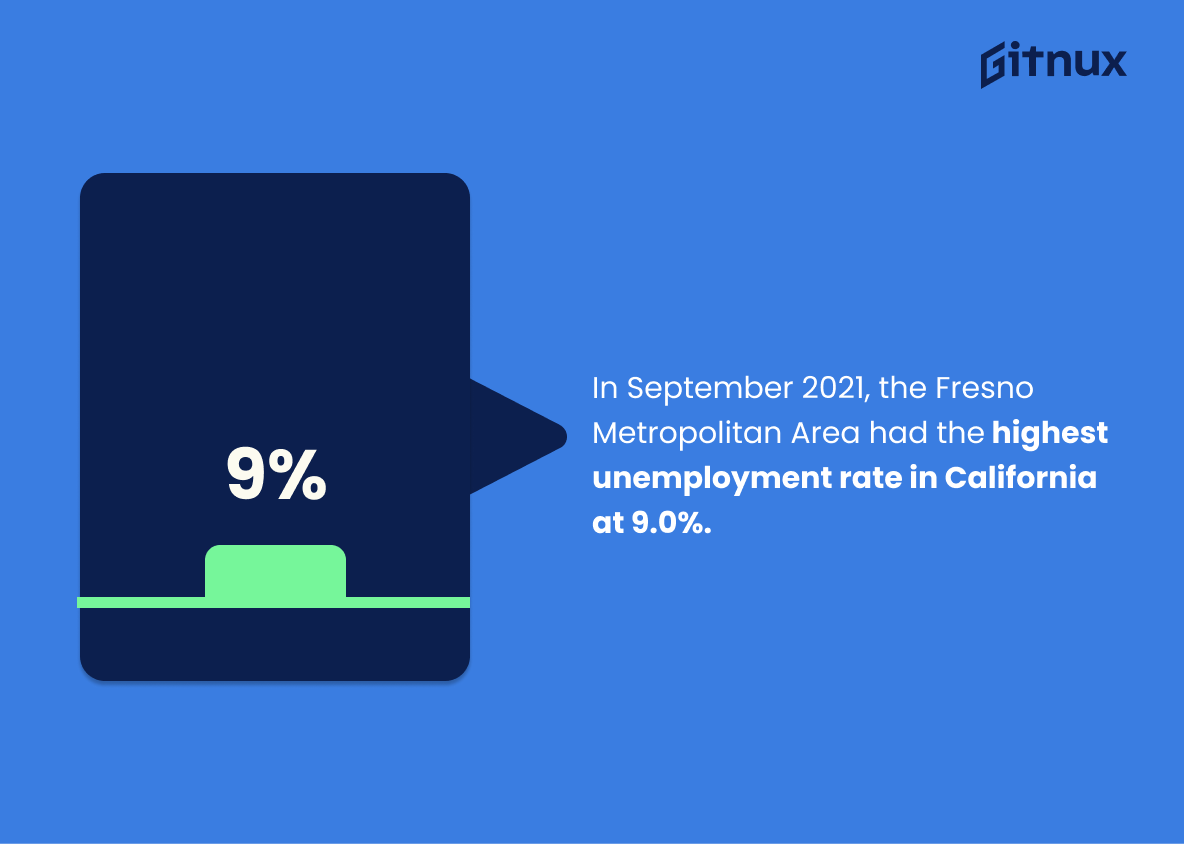California’s unemployment rate has been a major concern for many since the start of the COVID-19 pandemic. In September 2021, California had an unemployment rate of 7.5%, which was 4th highest in the United States according to data from the Bureau of Labor Statistics (BLS). The San Francisco Metropolitan Area had the lowest unemployment rate at 3.6%. However, other areas such as Fresno and Los Angeles County experienced higher rates with 9% and 9.2%, respectively.
The foodservice industry suffered some of the most job losses due to COVID-19 restrictions in June 2021, while young adults aged 16-24 were hit hardest by high levels of unemployment at 14.6%. Veterans also faced elevated levels with 6.8% unemployed in 2020 compared to women who saw 8.3% unemployed during that same period; Black or African American individuals experienced even greater hardship with 16
The statistic of California’s unemployment rate in September 2021 being 7.5% is a crucial indicator of the state’s economic health. It provides insight into the current job market and the number of people who are actively seeking employment. This statistic is a valuable tool for understanding the impact of the pandemic on the state’s workforce and can help inform policy decisions to help those affected by the economic downturn.
California experienced a peak unemployment rate of 16.4% in April and May 2020 due to the COVID-19 pandemic.
The statistic of California’s peak unemployment rate of 16.4% in April and May 2020 is a stark reminder of the devastating impact the COVID-19 pandemic has had on the state’s economy. It serves as a powerful illustration of the economic hardship that many Californians have faced in the wake of the pandemic. This statistic is an important part of understanding the full scope of the economic crisis in California and should be included in any blog post about California Unemployment Statistics.
California Unemployment Statistics Overview
In September 2021, the San Francisco Metropolitan Area had the lowest unemployment rate in California at 3.6%.
The San Francisco Metropolitan Area’s impressive 3.6% unemployment rate in September 2021 stands out as a beacon of hope in the midst of California’s otherwise bleak unemployment statistics.
As of October 30, 2021, there have been 73,241,939 initial unemployment claims in California since the start of the pandemic.
This statistic serves as a stark reminder of the devastating impact the pandemic has had on California’s workforce. It paints a vivid picture of the sheer number of individuals who have been forced to file for unemployment since the start of the pandemic, highlighting the immense economic hardship that has been experienced by so many.
In June 2021, the foodservice industry had the highest number of job losses in California due to the pandemic.
The staggering statistic of the foodservice industry having the highest number of job losses in California due to the pandemic in June 2021 is a stark reminder of the economic impact of the pandemic. This statistic serves as a powerful illustration of the devastating effects of the pandemic on the state’s workforce and economy. It is a sobering reminder of the need for continued support and assistance for those affected by the pandemic.
The unemployment rate in Los Angeles County was 9.2% in September 2021.
The unemployment rate in Los Angeles County being 9.2% in September 2021 is a stark reminder of the economic hardship that many Californians are facing. This statistic serves as a reminder of the need for continued support and resources to help those affected by the pandemic. It is a reminder that the economic recovery is still a work in progress and that more needs to be done to ensure that all Californians have access to the resources they need to get back on their feet.
In 2020, the unemployment rate for veterans in California was 6.8%.
The statistic of 6.8% unemployment rate for veterans in California in 2020 is a crucial indicator of the state’s economic health. It is a reminder that the state must continue to prioritize the well-being of its veterans, who have sacrificed so much for their country. This statistic is a testament to the importance of providing veterans with the resources they need to succeed in the civilian workforce.
The unemployment rate for women in California was 8.3% in 2020.
This statistic is a telling indication of the economic impact of the pandemic on women in California. It highlights the disproportionate burden that women have had to bear in terms of job losses and the need for greater support and resources to help them get back on their feet.
The Black or African American unemployment rate in California stood at 16.8% in 2020.
This statistic is a stark reminder of the racial disparities that exist in the California labor market. It highlights the fact that Black or African American individuals are disproportionately affected by unemployment in the state, and that more needs to be done to ensure that all Californians have equal access to employment opportunities.
In 2020, the unemployment rate for the Asian population in California was 7.8%.
The statistic of the Asian population’s unemployment rate in California in 2020 is a crucial indicator of the state’s economic health. It provides insight into the economic disparities between different racial and ethnic groups, and can help inform policy decisions to ensure that all Californians have access to economic opportunities. Additionally, this statistic can help identify areas of the state that may need additional resources to help reduce unemployment and create more jobs.
From 2019 to 2020, the unemployment rate for Hispanics in California increased from 4.7% to 10.5%.
This statistic is a stark reminder of the disproportionate impact of the economic downturn on the Hispanic community in California. It highlights the need for targeted policies and initiatives to support this population in the state.
Unemployment insurance payments in California fell from $1.269 billion in August 2020 to $182 million in August 2021, a decrease of 85.7%.
This statistic is a stark reminder of the progress California has made in recovering from the economic downturn caused by the pandemic. It shows that the state has been able to reduce the amount of money it has to pay out in unemployment insurance, indicating that more people are finding employment and the economy is improving. This is a positive sign for the future of California’s economy and a testament to the hard work of the state’s citizens.
As of October 2021, the California Employment Development Department administered $163.1 billion in unemployment insurance benefits since the pandemic began.
This statistic is a stark reminder of the economic impact of the pandemic on California. It speaks to the sheer magnitude of the unemployment crisis, with $163.1 billion in benefits having been administered since the pandemic began. It is a testament to the financial hardship that many Californians have faced, and the need for continued support and assistance.
In 2020, the San Jose-Sunnyvale-Santa Clara metropolitan area had the highest median annual wage in California at $86,240.
This statistic is a testament to the economic strength of the San Jose-Sunnyvale-Santa Clara metropolitan area, indicating that the region is a hub of high-paying jobs. This is especially relevant in the context of California Unemployment Statistics, as it suggests that the area is a desirable place to live and work, and that the unemployment rate in the region is likely to be lower than the state average.
California’s unemployment rate in September 2021 ranked 4th highest in the United States.
This statistic is a stark reminder of the economic hardship that Californians have faced in the wake of the pandemic. It highlights the need for continued support and assistance to those who have been affected by the economic downturn, and serves as a reminder of the importance of investing in job creation and economic recovery.
In September 2021, the Fresno Metropolitan Area had the highest unemployment rate in California at 9.0%.
The Fresno Metropolitan Area’s unemployment rate of 9.0% in September 2021 is a stark reminder of the economic hardship that many Californians are facing. This statistic serves as a reminder that the state’s unemployment rate is still far too high and that more needs to be done to help those affected by the pandemic.
The number of people unemployed in California totaled 1,438,200 in September 2021.
This statistic is a stark reminder of the impact of the pandemic on the California workforce. It paints a vivid picture of the struggles faced by the state’s citizens, and serves as a reminder of the importance of providing support and assistance to those affected by unemployment. It also serves as a benchmark for tracking the progress of the state’s recovery efforts.
Conclusion
The data presented in this blog post paints a comprehensive picture of the state of unemployment in California. The COVID-19 pandemic has had an immense impact on employment, with peak unemployment rates reaching 16.4% and initial claims totaling 73,241,939 since March 2020. Despite these staggering numbers, there are signs that the economy is recovering as evidenced by decreasing benefit payments and lower overall unemployment rates across all regions within California compared to last year’s figures.
It is clear from the statistics provided that certain demographics have been disproportionately affected by job losses due to the pandemic; young adults aged 16-24 experienced an especially high rate at 14.6%, while Black or African American workers saw their rate increase significantly from 10% in 2019 to 16.8%. Additionally, those without college degrees were more likely than not to be unemployed (11%), whereas individuals with bachelor’s degrees or higher fared better at 6%.
Overall it appears that although progress has been made towards economic recovery since April 2020 when statewide unemployment peaked at 16%, much work still needs to be done before pre-pandemic levels can be achieved again throughout California – particularly for vulnerable populations who continue facing significant disparities in access to jobs and wages relative other groups such as veterans (6%) and Asians (7%).
References
0. – https://www.www.edd.ca.gov
1. – https://www.edd.ca.gov
2. – https://www.www.bls.gov
3. – https://www.www.restaurant.org
4. – https://www.www.epi.org
5. – https://www.www.dol.gov
6. – https://www.oui.doleta.gov
7. – https://www.data.edd.ca.gov

